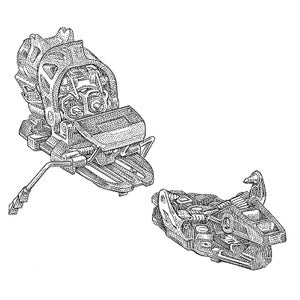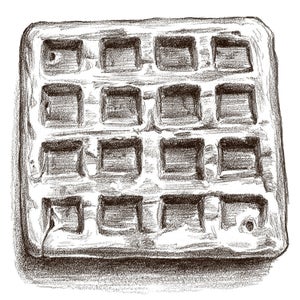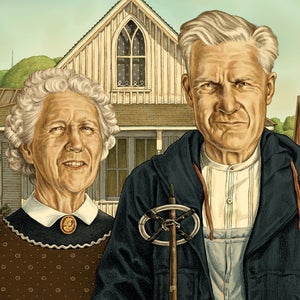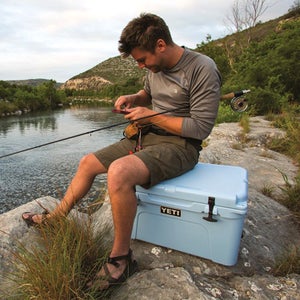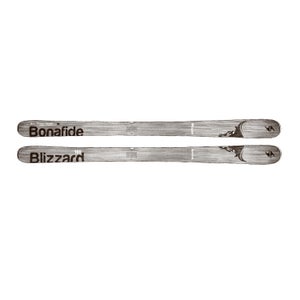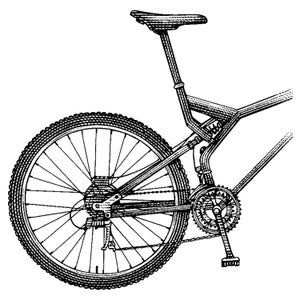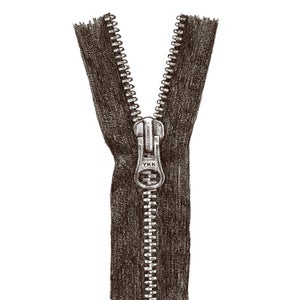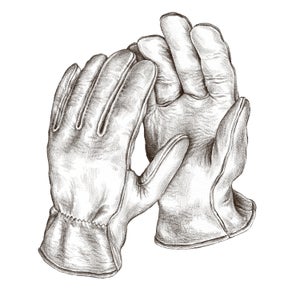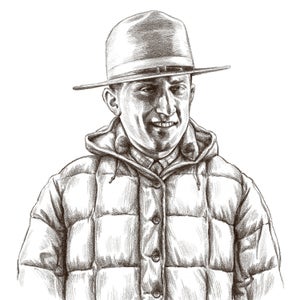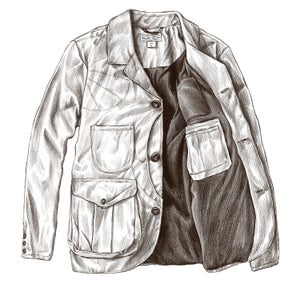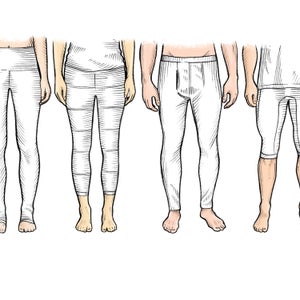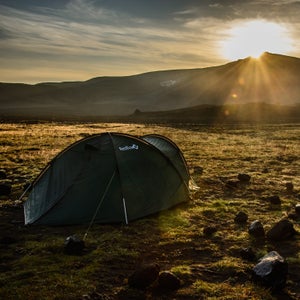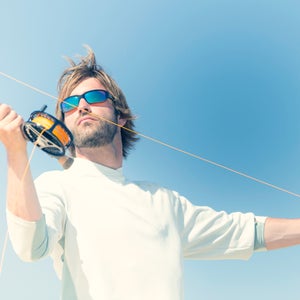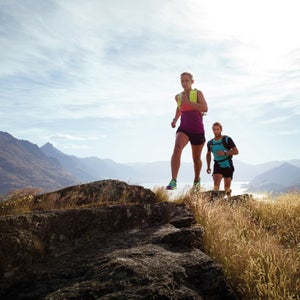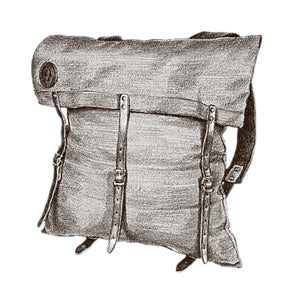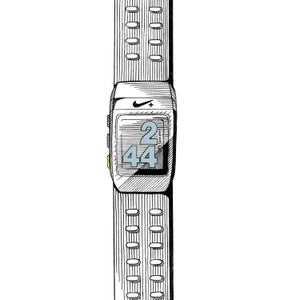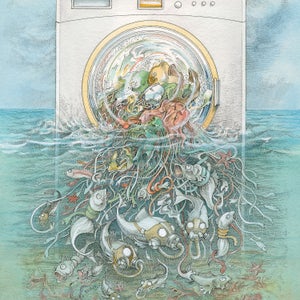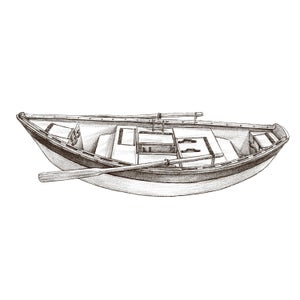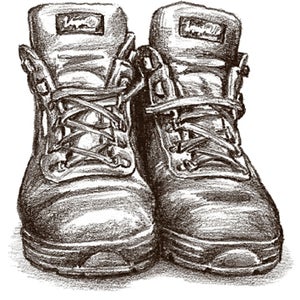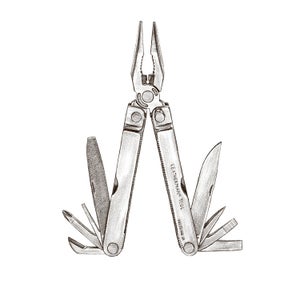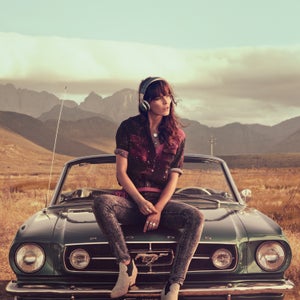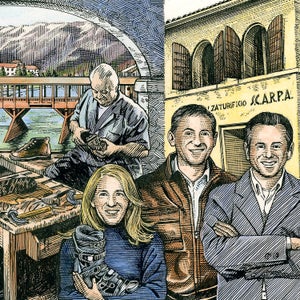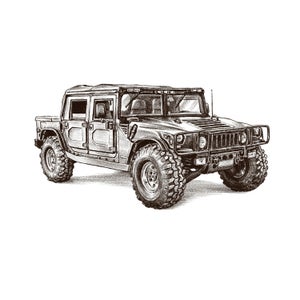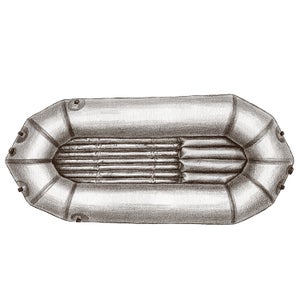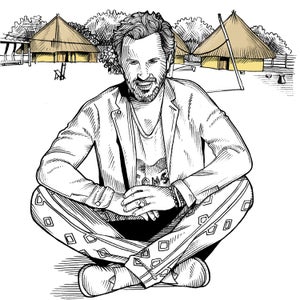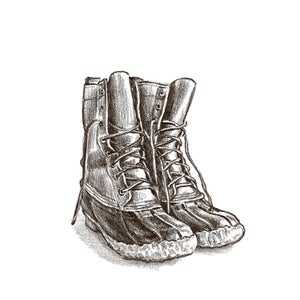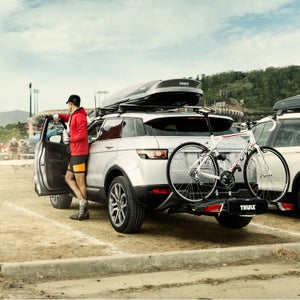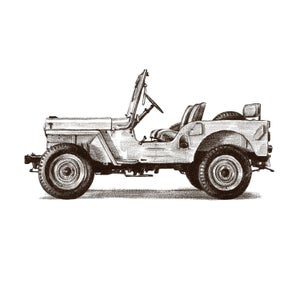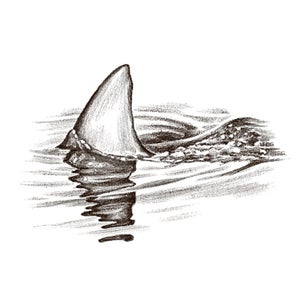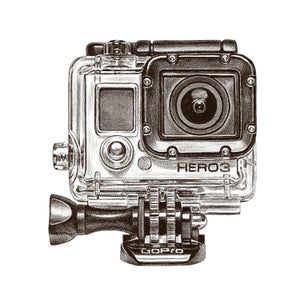Gear
ArchiveBMW GS: An iconic adventure motorcycle introduced in 1980 to compete in the Dakar Rally race, the famed long-distance off-road endurance event.
What do world-famous pilots like Jeb Corliss and Joby Ogwyn have in common? They all wear suits sewn by Tony Uragallo, a garden-loving designer who helps daring men zoom through the sky.
Tech binding: A lightweight binding system that transformed backcountry skiing and put telemarking on the path to obsolescence.
Dropper Post: A mountain-bike component that can be raised or lowered with a button mounted on the handlebars.
Chamois: A diaper-like pad first used by cyclists around 1900 to prevent saddle sores and chafing on their nethers.
Utility bike: A bicycle built for hauling children, gear, or grocery bags full of organic quinoa and local honey.
Chip timing: The practice of using a small wearable transmitter to track race participants’ times at regular checkpoints along a course.
You can now use clipless pedals with sneakers when you want to ditch your bike shoes
Crowdfunding: A method of raising capital to launch commercial ventures in which small individual donations are made through an online platform.
Direct to Consumer: A business model in which a company sells its products via its own website, catalog, or store, reducing retail markup and passing the savings along to the consumer.
Dithering: The intentional degrading of a satellite’s signal to discourage unauthorized use, which deterred citizens from tapping into the Department of Defense’s Global Positioning System, or GPS, for ten years.
Base-Camp Duffel: A large, 155-liter bag often seen loaded on yaks in Nepal’s Khumbu region for a few simple reasons: it can take a beating, it has straps that convert it into a backpack, and mountaineers know that it can carry all their gear.
Bill Bowerman: A legendary Oregon track coach who cofounded the shoe company Blue Ribbon Sports in 1964; 14 years later, it became Nike.
Lifa Shirt: The first commercially available base layer made from polypropylene, released in 1970 by Helly Hansen.
CamelBak: A hands-free hydration system that can be carried in a backpack.
Sports Bra: A groundbreaking invention that lets women participate comfortably in a range of vigorous athletic activities.
Royal Robbins: Climber, businessman, and archetype for the modern clean-climbing ethic, which espouses the use of removable protection instead of pounding pitons into rock.
Gear companies know how to make packs lighter, jackets more waterproof, and skis burlier. The only problem: young people couldn’t care less.
Camouflage: A varying pattern of earth-colored prints designed to obscure the wearer from view, worn by hunters and members of the U.S. military
Rollerblade: A roller skate with soft, linearly arranged wheels offering fast, smooth glide.
Double Plastic Mountaineering Boot: A highly reliable style of footwear that prevents frostbite in alpine environments.
Denali Jacket: A popular performance fleece garment made by the North Face and commonly seen on mountaineers and college students.
Rubbermaid Bin: A polyethylene storage container commonly used for gear.
Teva sandal: A water shoe that came to define a generation of river athletes.
Jacques Cousteau: A French explorer and arguably the most prolific marine scientist and ocean conservationist of the 20th century.
Tough-ass pants: A term for rugged work trousers that are particularly good at handling abuse.
Duct tape: A cloth-backed metallic gray adhesive that fixes anything worth saving.
SUP: Short for stand-up paddle-board, a stable floating platform that combines the cool of surfing with the practicality of a spin workout.
A tubeless tire tool that will fix holes too big for sealant
The raw materials that make up the tools for hiking, running, paddling, skiing, and cycling. These 36 building blocks are indispensable to the design and function of gear, from mankind’s first wool layer to the latest lab-born membranes. (Some things just look better in print. To see this in all…
Waffle: A repeating inverted cube shape adopted by sporting-goods manufacturers, beginning with Nike, which used the pattern on the sole of its iconic waffle trainer.
Founders of the Recreational Equipment Co-op (REI), which the couple started in their West Seattle home in 1938 as a way to help climber friends gain access to cheaper ice axes and harnesses by ordering bulk gear from Europe.
A cooler company whose two-inch-thick, double-walled products are so effective that its creation, in 2006, began a new era in rafting.
Portaledge: A collapsible sleeping platform for climbers.
Fat Skis: Skis that are at least 115 millimeters underfoot.
Telescoping front forks and articulating rear frame triangles that absorb bumps and shocks.
Fat shoes: Shoes with roughly 20 millimeters of foam underfoot
The brand of zipper that is likely keeping your britches up at this very moment. Headquartered in Tokyo, 81-year-old YKK (short for Yoshida Kogyo Kabushikikaisha, which translates as Yoshida Company Limited) was founded by Tadao Yoshida, who started making custom zippers to take advantage of breaks and…
Elk Skin Gloves: Hand protection made from the skin of the great wapiti.
P-cord: Parachute cord, also known as paracord, the world’s most versatile survival tool.
Recall: A request by a manufacturer, and usually the U.S. Consumer Product Safety Commission (CPSC), to return a product after the discovery of safety issues.
Puffy: A lightweight jacket insulated with duck or goose down or synthetic fill.
Sunglasses designed to protect a pilot’s eyes against high-altitude sun.
Lululemon: A yoga-apparel brand founded by Canadian entrepreneur Chip Wilson in 1998.
The surprising tendency for technical products and trends from the outdoor world to find their way into mass culture.
Caves, tepees, wall tents, those green canvas triangles that caused hypothermia in so many Boy Scouts—in one form or another, ideas borrowed from these flawed shelters appear in their modern descendents.
Dutch Oven: A large cast-iron pot and the campfire cooking vessel of choice for pioneers, cowboys, and river guides.
Repurposing: Taking a product and adapting it for a different use.
Polarization: A lens technology that cuts glare created when light reflects off materials like plastic and glass.
Little Things: Those items that mark the difference between a miserable experience and a joyous one—pit zips on jackets being a prime example.
Catalog: A magazine-like print presentation of a company’s or retailer’s products.
Odor Control: The relentless attempt by apparel makers to tame human stink.
Kite: A lightweight aircraft—often erroneously considered a toy—propelled by the wind and controlled by a user on the ground via a line or set of lines.
Duluth pack: A heavy canvas rucksack, patented in 1882 by French Canadian Camille Poirier in Duluth, Minnesota, along the shores of Lake Superior.
Washing a single polyester jacket can send 1,900 tiny synthetic micro-fibers into waterways, where they can soak up toxins and get eaten by fish. So what is the outdoor industry doing about it?
How a humble wooden fishing craft became the quintessential Grand Canyon ride
Therm-a-Rest: The first mass-market inflatable sleeping pad.
Vasque Sundowner: A svelte hiking boot that serves as a testament to how well-made products can endure despite evolving design trends.
Westfalia: A breed of Volkswagen camper van prone to expensive repairs, yet beloved by those who own them and coveted by road-trip dreamers everywhere.
Leatherman: A multitool invented by Tim Leatherman after wishing he had a pair of pliers while working on a rust-bucket Fiat with a pocket knife during a 1975 European road trip.
And how it's going to change the way you see all of your stuff
Jogging Stroller: A stroller that allows parents to run and, theoretically, get their toddlers to nap.
Headphones: Any device used for playing music close to or within a wearer’s ears.
The world's leading design center for outdoor footwear—everything from featherweight climbing shoes to hard-shelled mountaineering stompers—is a small city in northern Italy where craftsmanship reigns.
Hummer: The civilian version of the military’s Humvee off-road vehicle, which was produced by AM General from 1992 to 2006.
Pack Raft: A small inflatable raft that can be rolled up to fit in a backpack.
Pulaski: A wildland-firefighting tool that combines an ax and an adze and is used to clear brush and small trees.
Blake Mycoskie: A 38-year-old philanthropist and entrepreneur who founded Toms Shoes (originally Shoes for a Better Tomorrow) in 2006.
Lumbersexual: A fashion-conscious male urbanite whose clothing and accessories project an aura of rugged manliness.
Thule: A company founded by Swedish outdoorsman Erik Thulin, originally to make fishing gear.
Jeep: A four-wheel-drive vehicle first produced for the U.S. Army during World War II.
Surfboard Fin: A structural element, usually made of wood or fiberglass, attached to the bottom of a surfboard to aid maneuverability.
Sick Footie: A visual recording worth replaying for others.


